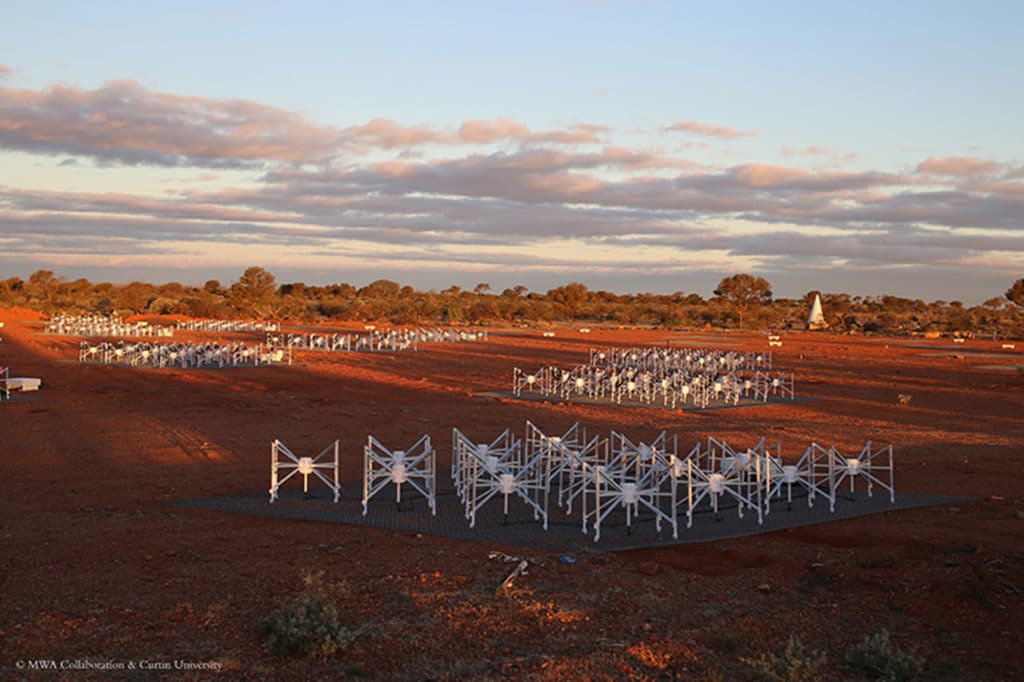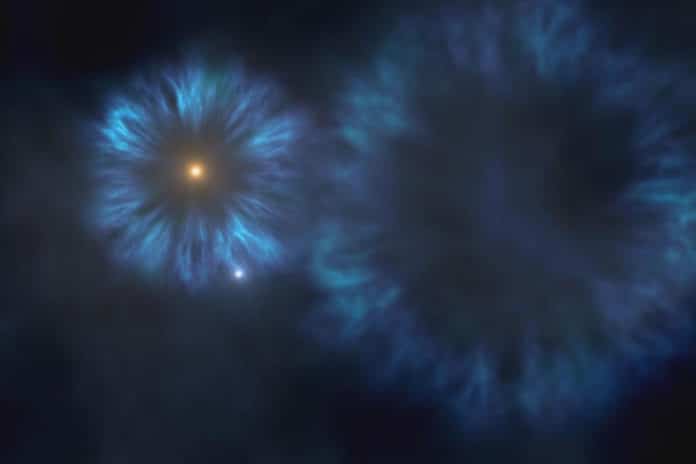Shortly after the Big Bang 13.7 billion years ago, the universe cooled enough to allow atoms to form, which eventually clumped together to make the first stars. Since these stars ignited, their light has been filling the universe, making a pervasive glow throughout space that each successive generation of stars adds to.
Astronomers are trying to peer into the beginning of the Universe to see how it all began – the first light. Now, astronomers used the Murchison Widefield Array (MWA) radio telescope to detect the signals from stars of the infant universe.
Scientists recently published a paper in The Astrophysical Journal, where they present the first investigation of data from the new configuration of the MWA designed explicitly to search for the sign of neutral hydrogen, the gas that dominated the universe during the cosmic dark age. The investigation sets another breaking point — the lowest limit yet — for the strength of the neutral hydrogen signal.
Jonathan Pober, an assistant professor of physics at Brown University and corresponding author on the new paper, said, “We can say with confidence that if the neutral hydrogen signal were any stronger than the limit we set in the paper, then the telescope would have detected it. These findings can help us to constrain further the timing of when the cosmic dark ages ended, and the first stars emerged.”
Despite its importance in cosmic history, little is known about the period when the first stars formed, which is known as the Epoch of Reionization (EoR). The exploration of the Epoch of Reionization (EoR) has the potential to reveal substantial information about the evolution of the early universe, as well as the UV and X-ray properties of the first galaxies.
Hydrogen ions (positive) were the first atoms that formed after the Big Bang. As the universe continued to expand and cool, the neutral hydrogen came together to form the quasars, galaxies, and first stars.

Scientists are trying to seek the signal caused by the light from these bodies re-ionizing neutral hydrogen in intergalactic space. Susceptible detectors are required for this detection from a wavelength of 21 cm to 2 m due to universes’ expansion.
The goal of projects like the one happening at MWA is to locate the signal of neutral hydrogen from the dark ages and measure how it changed as the EoR unfolded. Doing so could reveal new and critical information about the first stars — the building blocks of the universe we see today. But catching any glimpse of that 12-billion-year-old signal is a difficult task that requires instruments with exquisite sensitivity.
Scientists noted, “Neutral hydrogen emits radiation at a wavelength of 21 centimeters. As the universe has expanded over the past 12 billion years, the signal from the EoR is now stretched to about 2 meters, and that’s what we are looking for. The problem is there are myriad other sources that emit at the same wavelength — human-made sources like digital television as well as natural sources from within the Milky Way and from millions of other galaxies.”
Pober said, “All of these other sources are many orders of magnitude stronger than the signal we’re trying to detect. Even an FM radio signal that’s reflected off an airplane that happens to be passing above the telescope is enough to contaminate the data.”
To detect the signal, scientists used a myriad of processing techniques to remove those contaminants. Besides that, they represent the different frequency responses of the telescope itself.
Pober said, “If we look at different radio frequencies or wavelengths, the telescope behaves a little differently. Correcting for the telescope response is critical for then doing the separation of astrophysical contaminants and the signal of interest.”
“Those data analysis techniques combined with the expanded capacity of the telescope itself resulted in a new upper bound of the EoR signal strength. It’s the second consecutive best-limit-to-date analysis to be released by MWA and raises hope that the experiment will one day detect the elusive EoR signal.”
“This analysis demonstrates that the phase two upgrade had a lot of its desired effects and that the new analysis techniques will improve future analyses. The fact that MWA has now published back-to-back the two best limits on the signal gives momentum to the idea that this experiment and its approach has a lot of promise.”
